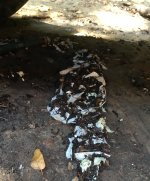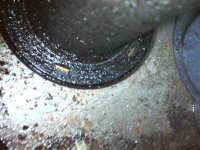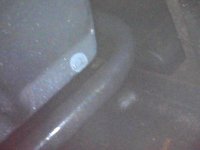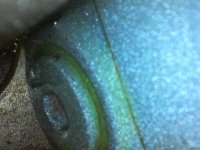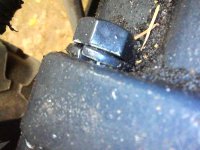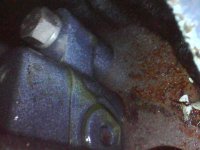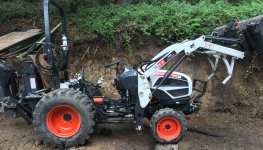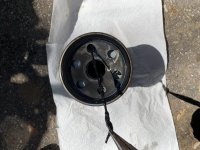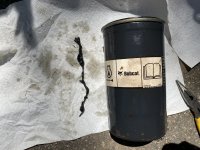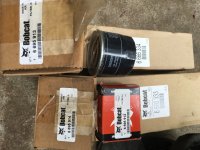ss4010
Silver Member
Hi All,
I have a 2009 Bobcat CT230 (White paint version of a Kioti CK30 HST) which looks to have developed a leak from inside the HST case.
Background:
Tractor is at the 500 hour service mark. It's had the HST pedal "sticking" for a number of years though occasional / minimal. I noticed the trans fluid was at the low limit, so I added about 1 gallon of fluid bringing it up to just below the full line on the transmission. After running it for about an hour, I noticed oil drops on the driveway. No apparent loss in performance. Power seems good though I suppose it could be gradually decreasing over 10 years and I just did not notice. After checking the level it's down to just below the min line on the dipstick.
After investigation (involving removal of a section of my homemade backhoe subframe) the leak was determined to be coming from the large ~75mm hole in the bottom of the HST Case.
Discovered inside was a rats nest. It seems like the entire case was filled with sticks, acorns, scrap paper, chewed up rubber gloves, leaves, and other rodent treasures. I flushed it out with a garden hose and about a gallon of debris washed out.
Getting on to the questions, hopefully someone here has taken one of these apart and can provide insight.
1. Is there anything inside the HST case that can be chewed by vermin (and cause a leak)?
2. Are there any relief valves or vents in the HST case? (attached image with arrow points to a possible RV?)
3. It seems possible there might be a leak at one of the propeller shaft seals or return lines going into the middle case?
4. Its due for service anyway, could a partially clogged HST filter result in back pressure and leakage inside the HST assembly?
Before everyone chimes in about calling the dealer, they dropped Bobcat about 7 years ago and were never really seemed interested in tractor sales in the first place.
Clearly I'm dreading the possibility of splitting the tractor just to investigate. So I'd like to do a little research up front.
I'll add pictures in the next post.
Thanks,
Steve

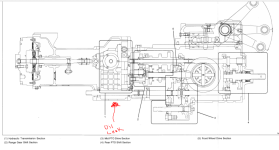
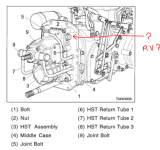
I have a 2009 Bobcat CT230 (White paint version of a Kioti CK30 HST) which looks to have developed a leak from inside the HST case.
Background:
Tractor is at the 500 hour service mark. It's had the HST pedal "sticking" for a number of years though occasional / minimal. I noticed the trans fluid was at the low limit, so I added about 1 gallon of fluid bringing it up to just below the full line on the transmission. After running it for about an hour, I noticed oil drops on the driveway. No apparent loss in performance. Power seems good though I suppose it could be gradually decreasing over 10 years and I just did not notice. After checking the level it's down to just below the min line on the dipstick.
After investigation (involving removal of a section of my homemade backhoe subframe) the leak was determined to be coming from the large ~75mm hole in the bottom of the HST Case.
Discovered inside was a rats nest. It seems like the entire case was filled with sticks, acorns, scrap paper, chewed up rubber gloves, leaves, and other rodent treasures. I flushed it out with a garden hose and about a gallon of debris washed out.
Getting on to the questions, hopefully someone here has taken one of these apart and can provide insight.
1. Is there anything inside the HST case that can be chewed by vermin (and cause a leak)?
2. Are there any relief valves or vents in the HST case? (attached image with arrow points to a possible RV?)
3. It seems possible there might be a leak at one of the propeller shaft seals or return lines going into the middle case?
4. Its due for service anyway, could a partially clogged HST filter result in back pressure and leakage inside the HST assembly?
Before everyone chimes in about calling the dealer, they dropped Bobcat about 7 years ago and were never really seemed interested in tractor sales in the first place.
Clearly I'm dreading the possibility of splitting the tractor just to investigate. So I'd like to do a little research up front.
I'll add pictures in the next post.
Thanks,
Steve




